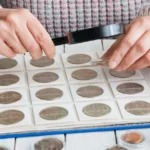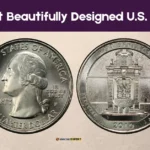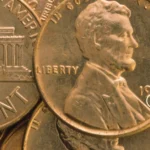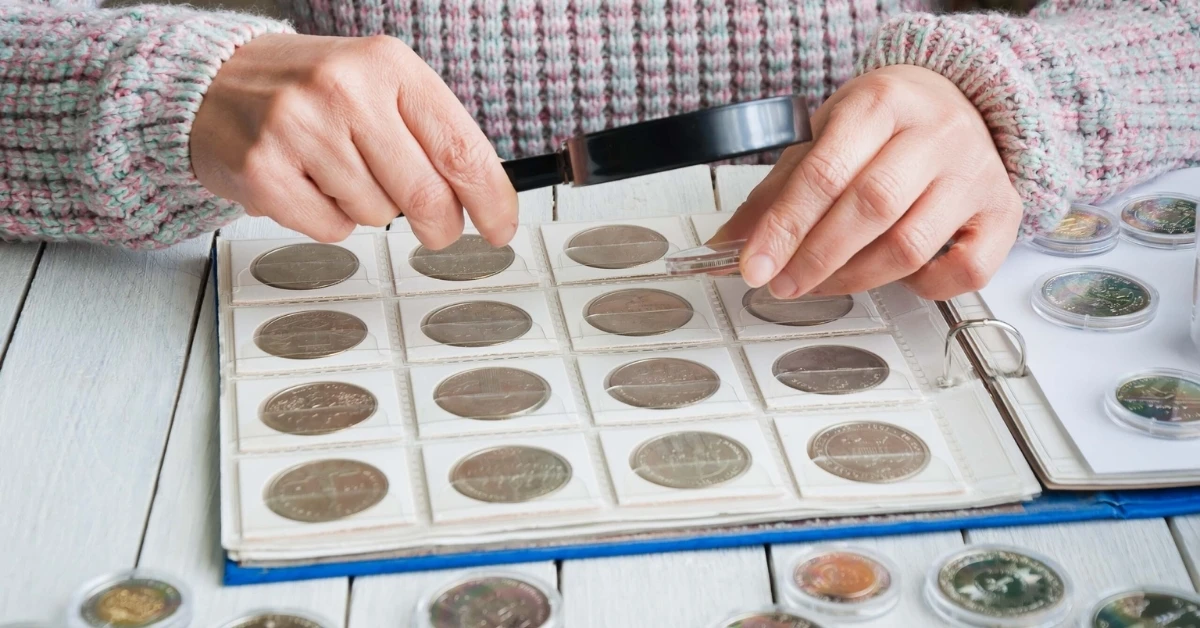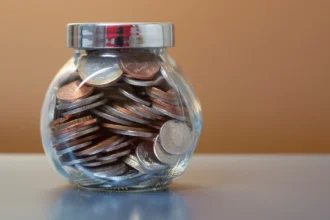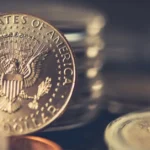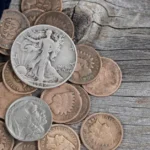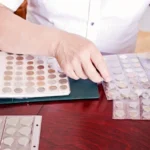Coins are more than just money; they are pieces of history, special memories, and valuable treasures. We must protect coins because for every collector, every coin tells a story — whether it connects to a famous event, a gift from someone dear, or a smart investment for the future. Because coins hold sentimental, historical, and financial value, collectors work hard to protect them.
But environmental factors like moisture, air pollution, and sudden temperature changes can badly damage coins over time. Tarnish, corrosion, and fading are just a few of the problems that can ruin a coin’s beauty and lower its value. Without the right care, even the rarest and most loved coins can lose their shine and worth.
This article gives you the best tips to protect your coins from environmental harm. By following these simple and practical steps, you can keep your coin collection safe and in excellent condition for many years. Let’s explore the steps you can take to protect your coins and keep their value strong.
1. Understanding the Risks of Environmental Damage
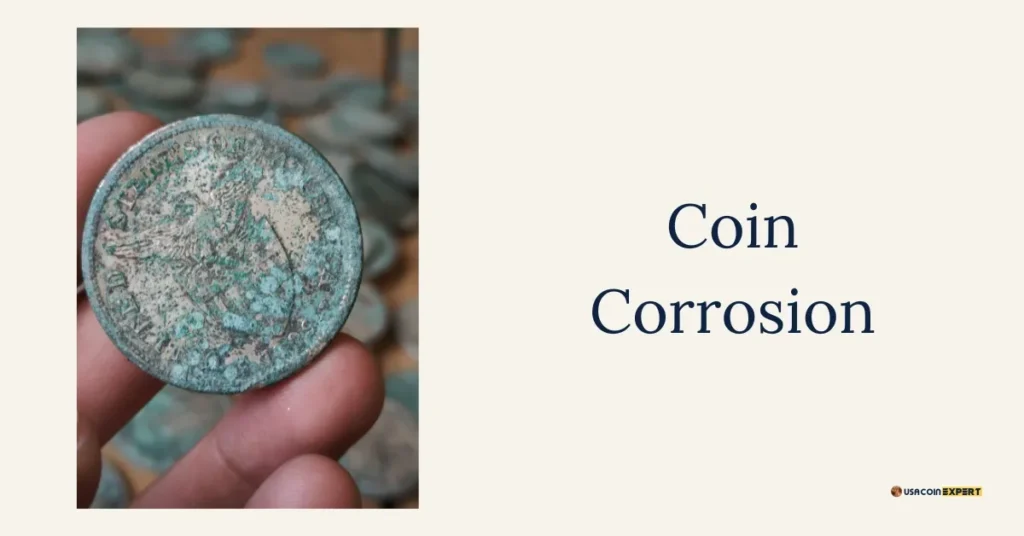
To protect your coin collection effectively, it’s crucial to understand the environmental factors that can cause harm. Coins, despite being made of durable metals, are surprisingly vulnerable to their surroundings. Let’s explore the most common threats:
Moisture and Humidity
Moisture is one of the primary factor behind coin damage. High humidity levels can lead to the formation of condensation on coin surfaces. This moisture reacts with the metals, resulting in:
- Rust on iron-based coins.
- Corrosion on copper and bronze coins, causing green patinas or crusty deposits.
- Tarnish on silver coins, where the surface darkens due to chemical reactions with airborne sulfur.
Continue exposure to humidity Speed up this processes, So control moisture levels in storage areas.
Temperature Fluctuations
Extreme or rapidly changing temperatures can stress the metal in coins, leading to:
- Micro-cracks on coin surfaces, especially on older or more brittle coins.
- Oxidation acceleration, where metals react more quickly with oxygen in the air.
- Warping or distortion in softer metal coins, such as gold.
Storing coins in environments with stable, moderate temperatures can help mitigate these risks.
Pollutants in the Air
Airborne chemicals like sulfur, chlorine, and industrial pollutants can interact with the surface of coins, causing significant damage over time. These pollutants may lead to:
- Chemical corrosion, leaving unsightly marks or pitting on the coin’s surface.
- Black or green tarnishing, particularly on silver and copper coins exposed to sulfur-containing compounds.
Even seemingly harmless household substances, such as cleaning products or perfumes, can release chemicals that degrade coins.
UV Exposure
Sunlight is another hidden danger for coins. Ultraviolet (UV) rays can:
- Fade inscriptions or details on coins with painted or artificially colored surfaces.
- Accelerate oxidation, especially on silver coins, leading to discoloration.
- Weaken coin materials by degrading protective coatings, leaving them more vulnerable to other environmental threats.
Keeping coins out of direct sunlight is a simple yet effective way to prevent UV-related damage.
2. The Importance of Proper Coin Storage
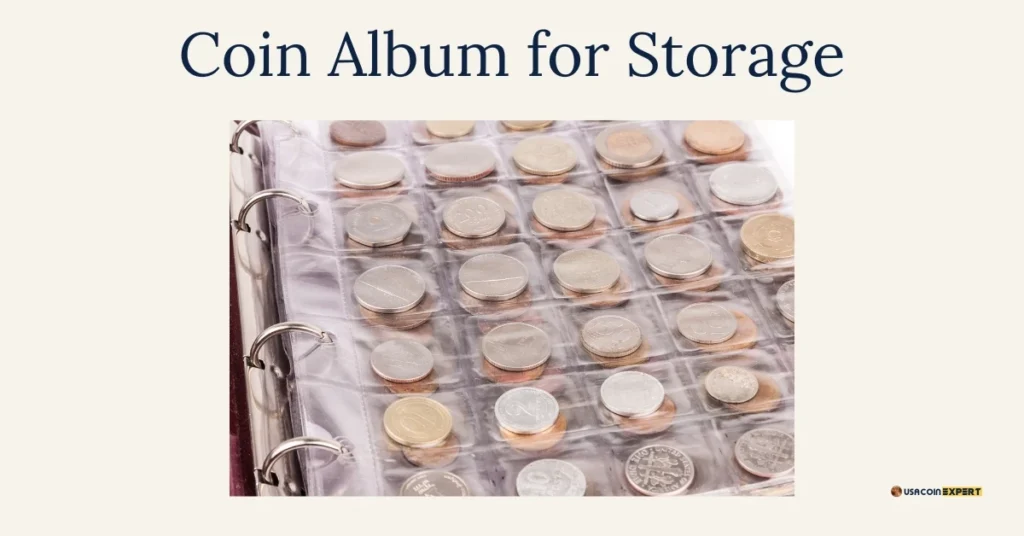
Proper storage is the cornerstone of preserving your coin collection. Storing coins in the right way not only protects them from environmental damage but also ensures their beauty and value remain intact for generations. Let’s explore the key elements of effective coin storage:
Airtight Storage: Benefits of Using Airtight Capsules or Holders
One of the most effective ways to protect coins is to store them in airtight capsules or holders. These storage solutions create a sealed environment that prevents exposure to air and moisture, two primary causes of coin damage. The benefits of airtight storage include:
- Preventing Oxidation: By limiting exposure to oxygen, airtight capsules reduce the likelihood of tarnish and corrosion.
- Moisture Protection: Airtight holders block humidity, safeguarding coins from rust and water damage.
- Preserving Details: These holders protect coins from scratches, fingerprints, and physical wear.
When choosing airtight capsules, ensure they fit snugly around the coin to prevent unnecessary movement.
PVC-Free Materials: Why PVC Damages Coins and What to Use Instead
Polyvinyl chloride (PVC) is a common material in inexpensive coin flips and holders, but it poses significant risks to coins. Over time, PVC breaks down and releases a chemical residue that can:
- Corrode Metal Surfaces: The residue reacts with metals, leaving sticky, greenish deposits.
- Permanently Damage Coins: The corrosive effects of PVC can cause irreversible pitting and discoloration.
For safe storage, opt for PVC-free materials such as:
- Mylar Flips: Durable and inert, Mylar is an excellent alternative to PVC.
- Acrylic or Polypropylene Holders: These materials are chemically stable and safe for long-term use.
Always verify that storage products are labeled as “archival-safe” or “acid-free” before using them.
Coin Albums and Sleeves: Best Practices for Storing Multiple Coins
For collectors with larger collections, coin albums and sleeves offer a practical and organized storage solution. When using albums:
- Choose Archival-Grade Albums: Ensure the album is made of acid-free, PVC-free materials to prevent chemical damage.
- Use Individual Pockets: Place each coin in its own pocket to prevent contact and potential scratching between coins.
- Keep Albums Upright: Store albums in a vertical position to avoid pressure or warping over time.
If you’re storing coins in sleeves, ensure they are tightly sealed to prevent dust or moisture infiltration.
3. Creating an Ideal Coin Storage Environment
Even the best storage materials can only do so much if the environment in which your coins are stored is not properly managed. Creating an ideal storage environment involves controlling temperature, humidity, and light exposure. Here’s how you can set up the perfect conditions to protect your collection.
Temperature Control: Recommended Temperature Ranges for Storing Coins
Fluctuating or extreme temperatures can cause significant damage to coins over time. Metals expand and contract with temperature changes, potentially leading to cracks or warping. To prevent this:
- Maintain Stable Temperatures: Store coins in a location where the temperature remains consistent, ideally between 65°F and 75°F (18°C to 24°C).
- Avoid Heat Sources: Keep coins away from heating vents, radiators, or other heat-producing appliances.
- Don’t Store in Extreme Cold: Freezing conditions can make some metals brittle, increasing the risk of damage.
A temperature-controlled room or safe is ideal for preserving the structural integrity of your coins.
Humidity Control: Use of Silica Gel Packs, Dehumidifiers, and Humidity Meters
Humidity is one of the biggest threats to coin preservation, as it can cause tarnish, corrosion, and even mold in extreme cases. To control humidity effectively:
- Target Humidity Levels: Aim to keep the relative humidity in your storage area between 30% and 50%.
- Use Silica Gel Packs: Place silica gel packets in storage containers or safes to absorb excess moisture.
- Invest in a Dehumidifier: If you live in a humid climate, a small dehumidifier can help maintain ideal conditions in your storage space.
- Monitor with a Hygrometer: Use a humidity meter to regularly check the environment’s relative humidity.
Replace silica gel packs regularly and monitor humidity levels to ensure they stay within the recommended range.
Dark, Safe Locations: Avoiding Sunlight Exposure and Selecting Secure Storage Areas
Exposure to sunlight and UV rays can cause coins to fade or discolor over time, especially those with painted or toned finishes. To keep your collection safe:
- Store in a Dark Place: Use a cabinet, drawer, or safe that completely blocks light.
- Avoid Windows: Keep coins away from direct or indirect sunlight, as even reflected light can cause damage over time.
- Choose a Secure Location: Ensure the storage area is not only environmentally controlled but also safe from theft or accidental disturbances. A locked safe or vault is ideal for high-value collections.
By combining a dark environment with stable temperature and humidity controls, you can create a safe haven for your coins.
4. Best Practices for Handling Coins
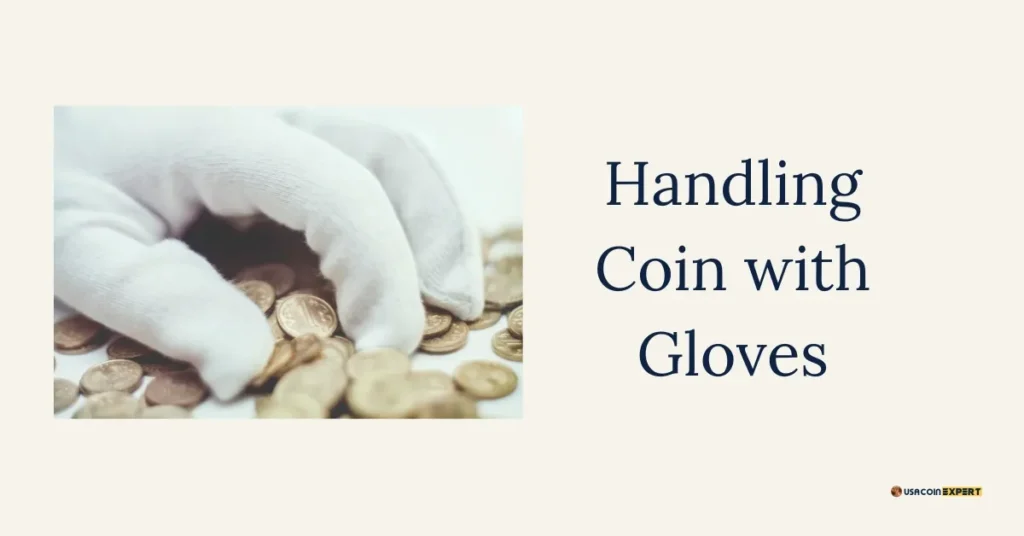
Proper handling is just as important as storage when it comes to protecting your coin collection. Mishandling can lead to scratches, tarnish, or contamination, significantly reducing a coin’s value. Follow these best practices to ensure your coins remain in pristine condition.
Use Gloves: Why Cotton or Nitrile Gloves Are Essential When Handling Coins
Your hands naturally produce oils and acids that can transfer to a coin’s surface, causing long-term damage. To prevent this:
- Wear Gloves: Always use clean, lint-free cotton or nitrile gloves when handling coins.
- Avoid Latex Gloves: Latex can leave residues or react with some metals, potentially causing discoloration.
- Inspect Gloves for Cleanliness: Ensure gloves are free from dirt or debris that could scratch the coin.
By wearing gloves, you create a protective barrier that prevents direct contact with the coin’s surface.
Clean Workspaces: How to Prepare a Clean, Dry Area for Examining Coins
Coins are delicate and should only be handled in a controlled environment. Before working with your collection:
- Clear the Area: Remove any sharp or abrasive objects, such as pens, tools, or jewelry, that could scratch the coins.
- Use a Soft Surface: Lay down a clean, soft cloth or padded mat to cushion coins in case they are dropped.
- Ensure Good Lighting: Use natural or non-UV lighting to properly inspect coins without risking exposure to harmful rays.
- Keep the Space Dry: Avoid working in areas with high humidity or near liquids that could accidentally spill.
A clean workspace minimizes the risk of accidental damage during handling or examination.
Minimize Touch: Avoiding Contact with Bare Hands to Prevent Oils and Acid Transfer
Even with gloves, it’s essential to handle coins carefully to reduce the risk of damage. Keep these tips in mind:
- Hold by the Edges: Always pick up coins by their edges to avoid smudging or scratching the obverse (front) and reverse (back) surfaces.
- Avoid Frequent Handling: Limit handling as much as possible to reduce the chance of accidental drops or contamination.
- Never Stack Coins: Stacking coins can cause friction and scratches, especially if they slide against one another.
By minimizing direct contact and using proper techniques, you can preserve the fine details and finish of your coins.
5. Common Mistakes to Avoid
Even with the best intentions, certain practices can inadvertently damage your coin collection. Avoiding these common mistakes will help ensure your coins remain in excellent condition for years to come.
No Cleaning: The Risks of Cleaning Coins Without Professional Guidance
One of the biggest mistakes collectors make is attempting to clean their coins. While it may seem like a good idea to restore a coin’s shine, cleaning often does more harm than good:
- Scratches and Abrasions: Rubbing a coin, even lightly, can scratch its surface and remove delicate details.
- Damage to Patina: Many coins develop a natural patina over time, which is highly valued by collectors. Cleaning can strip away this protective and desirable layer.
- Loss of Value: Collectors and grading services often consider a cleaned coin “damaged,” significantly lowering its market value.
If you believe a coin needs cleaning, consult a professional numismatist or restoration expert to avoid unintentional harm.
Avoid Harmful Chemicals: Why Adhesives, Polishes, or Improper Cleaning Agents Should Never Touch Coins
Chemicals can react unpredictably with the metals in coins, causing irreversible damage. Avoid using:
- Adhesives or Tape: These leave sticky residues that are difficult to remove and can corrode the coin’s surface.
- Metal Polishes or Cleaners: Commercial cleaners often contain harsh chemicals that can strip protective coatings or discolor metals.
- Household Chemicals: Products like bleach, vinegar, or ammonia can pit or etch coin surfaces, ruining their finish.
Always store coins in chemically neutral environments, and never apply substances directly to their surfaces.
Mixing Metals: The Dangers of Storing Different Metals Together
Coins made from different metals, such as silver, copper, and gold, should never be stored in direct contact with one another. Here’s why:
- Galvanic Corrosion: When different metals touch, an electrochemical reaction can occur, leading to corrosion or discoloration.
- Chemical Interactions: Some metals, like copper, are more reactive and can transfer residues or tarnish to neighboring coins.
- Physical Damage: Harder metals like gold can scratch softer metals like silver during storage.
To avoid these issues, use individual holders or compartments to separate coins by type and composition.
6. Advanced Methods for High-Value Coins
For rare or high-value coins, taking additional precautions ensures their security and long-term preservation. Whether it’s encapsulation, secure storage, or financial protection, these advanced methods help you safeguard your most prized pieces.
Professional Grading: Benefits of Encapsulation by Trusted Services
Professional grading is an essential step for high-value coins. Reputable grading organizations, such as the Numismatic Guaranty Company (NGC) or the Professional Coin Grading Service (PCGS), provide:
- Authenticity Verification: Experts verify that your coin is genuine, which is critical for rare or valuable pieces.
- Encapsulation: Coins are sealed in tamper-proof, airtight holders that protect them from environmental damage and physical handling.
- Graded Certification: Coins are assigned a grade based on their condition, which directly impacts their market value and desirability.
Encapsulation not only protects coins but also gives buyers and collectors confidence in the coin’s authenticity and grade, making it easier to sell or trade in the future.
Safe Deposit Boxes: Why Rare Coins Might Be Best Stored in a Bank’s Secure Facility
For coins of significant financial or sentimental value, storing them in a safe deposit box is a wise choice. Banks provide a highly secure environment that minimizes risks such as theft, fire, or water damage. Key advantages include:
- Enhanced Security: Safe deposit boxes are protected by multiple layers of security, including surveillance and access control.
- Climate Control: Many bank vaults maintain stable temperatures and humidity levels, ideal for coin storage.
- Peace of Mind: Knowing your collection is stored in a secure facility reduces the worry of keeping valuable items at home.
While safe deposit boxes are highly secure, you may want to keep detailed records of what’s stored there for easy access when needed.
Insurance: Importance of Insuring High-Value Collections
Even with the best storage methods, unforeseen events like natural disasters or theft can occur. Insuring your collection provides financial protection and peace of mind. Here’s what to consider:
- Specialized Collectibles Insurance: Many insurance companies offer policies tailored for coin collections, covering loss or damage.
- Appraisal Documentation: Obtain an up-to-date appraisal from a professional to ensure your collection is valued accurately.
- Detailed Inventory: Keep a comprehensive list of your coins, including photos, descriptions, and receipts, to simplify the claims process.
Insurance is especially important for rare or irreplaceable coins, as their value can make them a target for theft.
7. Routine Maintenance and Inspections
Regular maintenance and inspections are essential to keep your coin collection in top condition. By periodically checking your coins and taking proactive steps to address minor issues, you can prevent long-term damage and preserve their value.
Periodic Inspections: How to Spot Early Signs of Damage
Regularly inspecting your coins helps you catch potential problems before they worsen. Here’s what to look for:
- Tarnish or Discoloration: Check for changes in color, particularly on silver and copper coins, which may indicate oxidation.
- Corrosion or Pitting: Look for greenish or crusty deposits, especially on coins stored in humid environments.
- Surface Scratches or Marks: Ensure the coin’s surface is free of new blemishes caused by improper handling or storage.
Inspect your coins in a clean, well-lit area using a magnifying glass to spot subtle changes.
Proactive Care: Steps to Address Minor Issues Without Harming the Coins
If you notice early signs of damage, take action promptly to prevent further deterioration. Here’s how to address common issues safely:
- Isolate Affected Coins: Remove tarnished or corroded coins from the rest of your collection to prevent contamination.
- Seek Professional Help: If a coin requires cleaning or restoration, consult a professional numismatist. Avoid DIY cleaning methods that may worsen the damage.
- Refresh Storage Materials: Replace worn-out holders, capsules, or silica gel packs to ensure continued protection.
Taking these small steps can significantly extend the lifespan of your coins while preserving their appearance.
Rotation Tips: Ensuring Long-Stored Coins Remain in Good Condition
Coins stored for long periods may require occasional attention to prevent damage from prolonged inactivity. Follow these rotation tips:
- Reorganize Periodically: Rotate coins within albums or holders to avoid uneven pressure or marks caused by prolonged contact with storage materials.
- Check for Environmental Changes: Monitor the storage environment regularly for fluctuations in temperature or humidity.
- Inspect Holders and Capsules: Ensure airtight capsules remain sealed and replace any damaged or compromised holders.
Regular rotation and reorganization ensure your collection remains evenly protected and prevent overlooked issues from escalating.
Conclusion
Preserving your coin collection takes proper storage, careful handling, and regular maintenance. Coins are more than just money—they are real pieces of history, meaningful keepsakes, and valuable investments that deserve careful attention.
When you understand the risks from the environment and take steps to reduce them, you can protect your coins from tarnish, rust, and fading. By choosing airtight, PVC-free holders and keeping a stable, humidity-controlled space, you help your coins last longer. Using gloves, keeping chemicals away, and separating coins by metal will help keep their surfaces clean and damage-free.
For rare or valuable coins, you can take extra steps like getting professional grading, using secure storage, or buying insurance to make sure they stay safe and hold their value.
Regular checks and proactive care let you catch small problems early, keeping your collection in great shape for years to come. By following the tips in this guide, you can enjoy your coins while making sure they stay beautiful and valuable.
Start using these tips today to protect your collection and keep its legacy alive. If you have questions or tips of your own, share them in the comments—let’s help the coin collecting community stay strong!
FAQ: How to Protect Coins from Environmental Damage
1. Why is it important to protect coins from environmental damage?
Coins are vulnerable to environmental factors like moisture, temperature fluctuations, and pollutants, which can cause tarnish, corrosion, and discoloration. Protecting coins helps preserve their beauty, value, and historical significance.
2. What is the best way to store coins?
The best way to store coins is in airtight, PVC-free holders or capsules. These provide a sealed environment that prevents exposure to air, moisture, and contaminants.
3. What temperature and humidity levels are ideal for storing coins?
Coins should be stored at a stable temperature between 65°F and 75°F (18°C to 24°C), with relative humidity levels between 30% and 50%. Use a dehumidifier or silica gel packs to maintain these conditions.
4. Can I clean my coins to make them look shiny?
No, cleaning coins is not recommended, as it can cause scratches, remove the natural patina, and reduce their value. If cleaning is necessary, consult a professional numismatist for guidance.
5. What materials should I avoid for coin storage?
Avoid storage materials containing PVC, as it releases chemicals that can corrode coins over time. Instead, use acid-free, archival-grade materials like Mylar flips or polypropylene holders.
6. How often should I inspect my coin collection?
It’s a good practice to inspect your collection every few months. Look for signs of tarnish, corrosion, or environmental damage, and ensure that storage materials remain in good condition.
7. Why should I use gloves when handling coins?
Using gloves, such as cotton or nitrile gloves, prevents oils and acids from your hands from transferring to the coins, which can lead to tarnish or discoloration over time.
8. Should I store different types of metal coins together?
No, storing different metals together can cause galvanic corrosion, where an electrochemical reaction occurs between metals. Always store coins of different metals separately in individual holders or compartments.
9. What are the benefits of professional coin grading?
Professional grading by services like NGC or PCGS ensures coins are authenticated, encapsulated in tamper-proof holders, and assigned a grade that reflects their condition and value.
10. Is it necessary to insure a coin collection?
If your collection includes rare or high-value coins, insurance is highly recommended. Specialized collectibles insurance can protect your investment against theft, fire, or other unforeseen events.
11. Can sunlight damage coins?
Yes, sunlight and UV rays can cause fading, discoloration, and damage to painted or toned coins. Always store coins in a dark location, away from direct or indirect sunlight.
12. What should I do if I notice corrosion on a coin?
Isolate the affected coin to prevent further contamination and consult a professional numismatist for advice on safe restoration methods.



